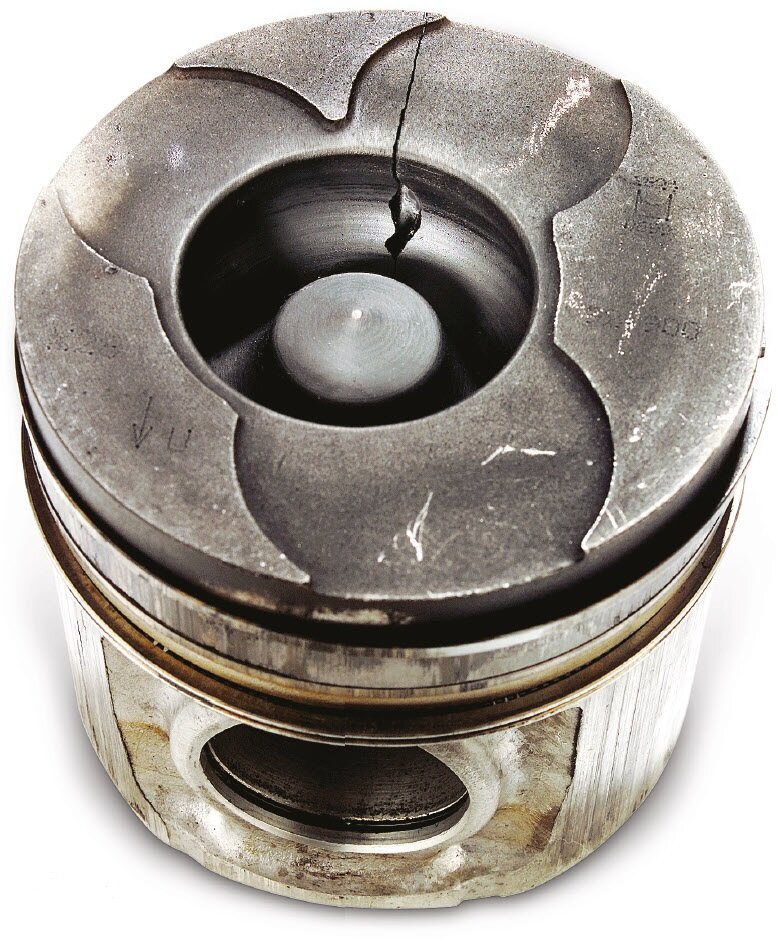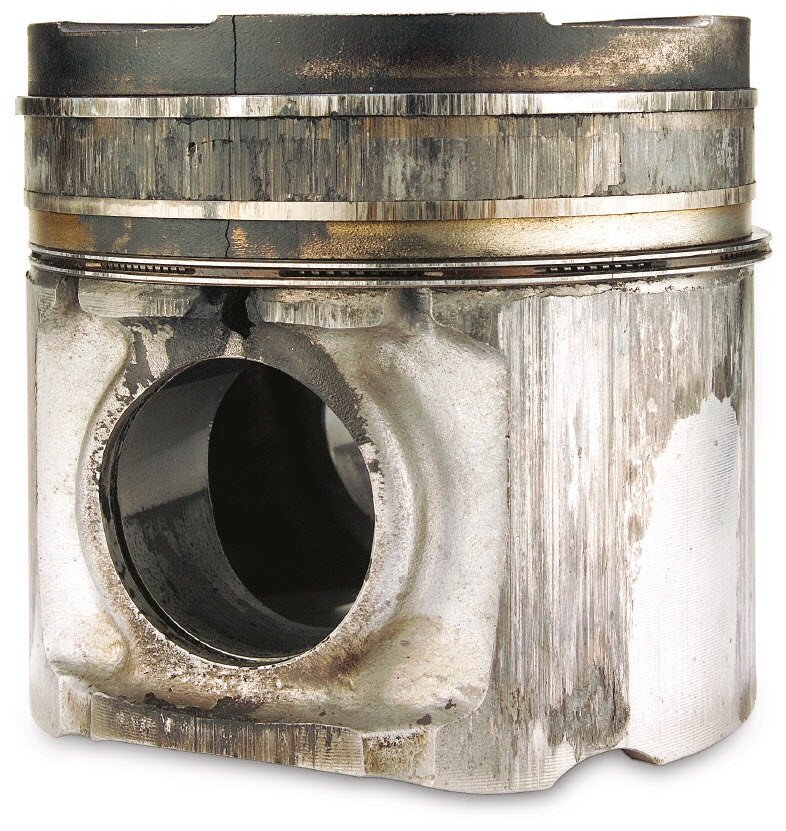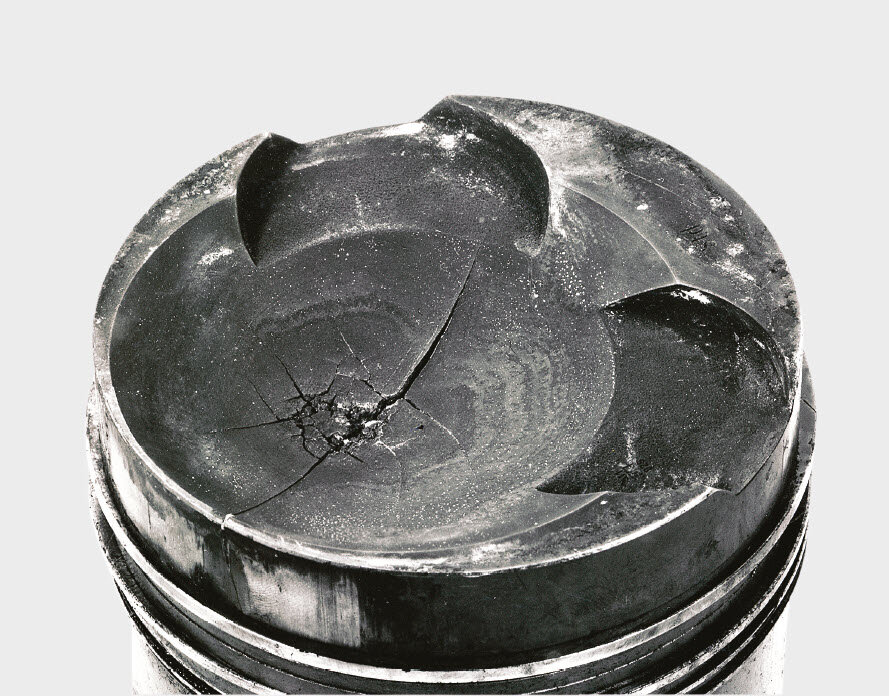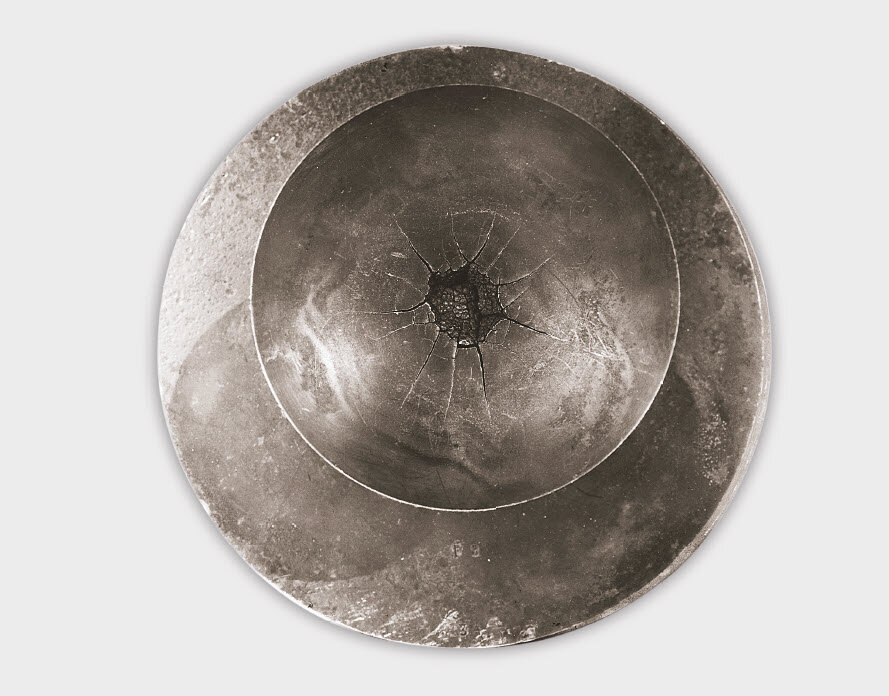Cracks in the piston crown and bowl (diesel engines)
DESCRIPTION OF THE DAMAGE
- Stress cracks on the edge of the bowl.
- Major crack extends to the piston pin boss.
- Channel burned from the bowl to below the oil control ring by combustion gases streaming through the major crack.


DAMAGE ASSESSMENT

The piston material is heated up significantly in localised areas – at the point where the prechamber jets make contact on prechamber engines (Fig. 3 and Fig. 4), and on the edge of the bowl on direct injection engines (Fig. 1). The material expands more than elsewhere in these areas. As the overheated areas are surrounded by colder materials, the material is plastically deformed here beyond its limit of elasticity. Exactly the opposite happens when it then cools down again: in the areas where before the material was previously buckled and forced away, there is now a shortage of material.
This results in tensile stresses, which ultimately cause stress cracks. If there are superimposed stresses caused by bending of the piston pin in addition to the thermal stresses, then the stress cracks turn into a much larger major crack, which causes complete breakage and failure of the piston.
This results in tensile stresses, which ultimately cause stress cracks. If there are superimposed stresses caused by bending of the piston pin in addition to the thermal stresses, then the stress cracks turn into a much larger major crack, which causes complete breakage and failure of the piston.
POSSIBLE CAUSES FOR THE DAMAGE

- Faults in mixture preparation caused by incorrect injection nozzles, malfunctions in the fuel injection pump or damage to the prechamber.
- High temperatures as a result of defects in the cooling system.
- Faults on the engine brake, or excessive use of the engine brake. This results in overheating.
- Insufficient piston cooling on pistons with a oil cooling gallery, caused for example by blocked or bent cooling oil nozzles.
- Temperature fluctuations in engines with frequently changing loads, such as city buses or earthmoving machines.
- Pistons with an incorrect specification, e.g. no oil cooling gallery despite the fact that a piston with oil gallery must be used.
- Pistons made by third-party manufacturers without fibre reinforcement of the edge of the bowl.
- Pistons with an unsuitable bowl shape for the engine (refer to the chapter entitled “Piston head seizure due to the use of incorrect pistons”).
Side info